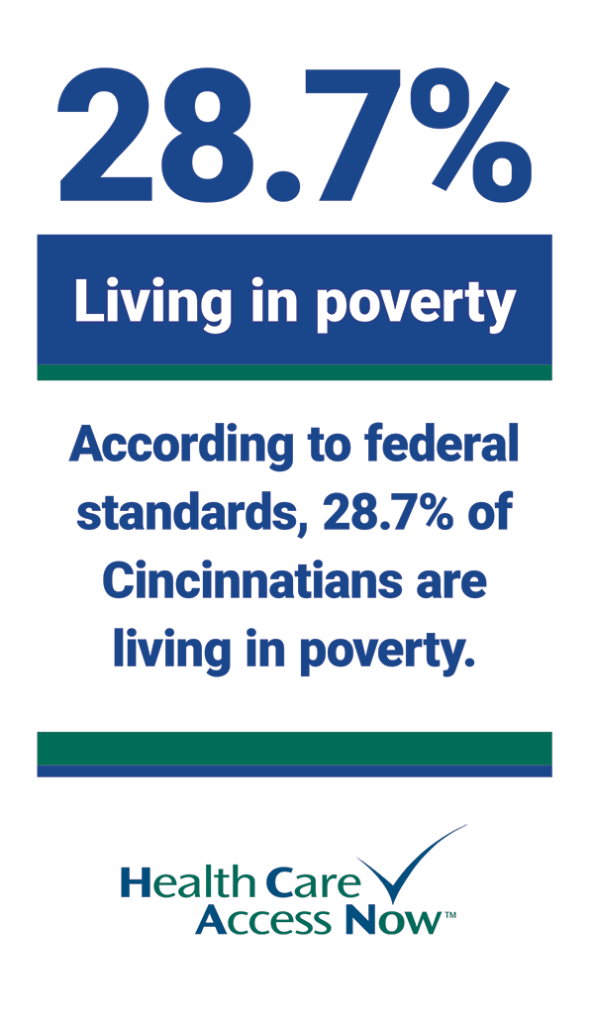Living in poverty in Cincinnati

What does it truly mean to live in poverty? According to the federal standards for measuring poverty, 28.7% of Cincinnatians fall into that category. Compare that to a poverty rate of 14.9% for all Ohio citizens.
The 2022 poverty guidelines from the U.S. Department of Health and Human Services put the poverty threshold for a family of four at an annual income of $27,750. If one adult in the household is working full-time, that translates to about $13 per hour.
Black Cincinnatians are more likely to be categorized as impoverished—both as compared to white Cincinnatians and as compared to Black U.S. citizens as a whole. In Cincinnati, 39.6% of Black citizens live in poverty (versus a national poverty rate for Black people of 25.2%). Black people represent 41.9% of the total population of Cincinnati.
Cincinnati’s children living in poverty
No matter their age, a significant percentage of Cincinnati’s schoolchildren live in poverty. Of students in grades one through four, 45.6% are categorized as living in poverty. That number decreases somewhat in middle school (40.1%) and high school (38.1%), but rebounds in college to 48.5%.
According to the National Association of Secondary School Principals, the challenges of poverty cross over from home life to school life for students. This is partially because schools in low-income neighborhoods are allocated fewer resources, which “leaves schools with limited budgets to address a multitude of issues, including hiring educators, updating resources for students, preparing students for postsecondary education or the workforce, dealing with unsafe infrastructure, and much more.”
Not only that, health problems plague low-income people of all ages. Lack of access to nutritious food, exposure to lead (and other toxic substances), and higher levels of stress elevate the chances that people living in poverty—children included—“can influence cognitive development and chronic disease development,” according to the American Academy of Family Physicians.
Growing up in poverty begins a lifetime of struggles that can be difficult, if not impossible, to escape.
Social determinants of health
As Sarah Mills, CEO of Health Care Access Now (HCAN) says, “Children are not living alone in poverty. When children are living in poverty, adults are living in poverty, too.”
HCAN and its Community Health Workers (CHWs) work with both adults (through its Adult Health Care Coordination Program) and with mothers and children (through its Pregnancy and Family Health Care Coordination Program). CHWs work with clients to understand the challenges those in the household face and provide resources to allow them to overcome obstacles and better their health outcomes.
Care Coordination and the intervention of CHWs does a great deal to improve situational influences on health (such as finding and maintaining access to suitable housing), but living in poverty has wide-ranging effects on health—from mental illness to higher mortality to lower life expectancy. Poverty can be a lifelong (and a generational) threat to good health.







